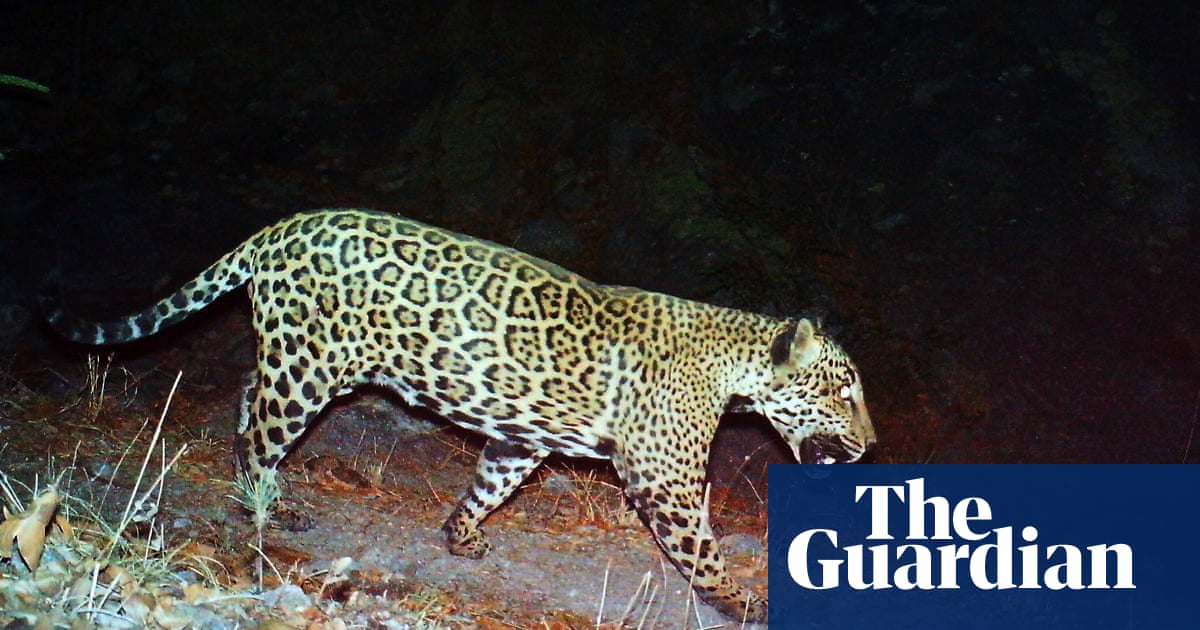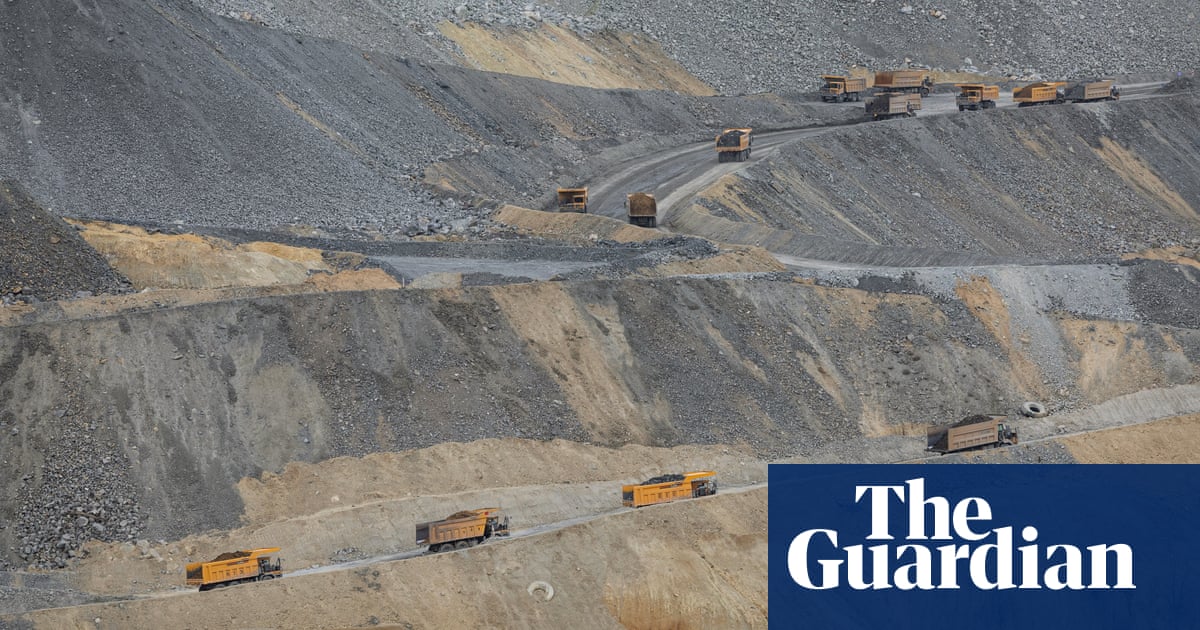‘I was thrilled and shocked’: images raise hopes of return of wild jaguars to the US | Endangered species


The young, muscular male approached from the east at about 4am. He paused briefly in front of the motion-sensor camera, seemingly posing for the photo. “It was overall a moment of euphoria,” says Emily Burns, programme director at the Sky Island Alliance conservation group in Arizona, as she walks along a rutted forest service road towards a canyon framed by lichen-covered cliffs.
“I was equal parts thrilled and shocked that there was a jaguar here.”
Jaguars once roamed throughout the American south-west, but they were hunted to local extinction by the 1960s. In the 1990s, the elusive cat began to occasionally reappear in the rugged Sky Islands mountain ranges in New Mexico and Arizona. Now, a series of sightings in the region over the past year marks the endangered predators’ tentative return.
Yet numerous obstacles remain to re-establishing a jaguar population in the US. The wide-ranging cat faces growing climate extremes, habitat loss – and the continued impact of the Trump administration’s border wall, which has severed wildlife corridors and fragmented ecosystems throughout the region.
In November 2023, Sky Island Alliance captured an image of a large jaguar walking along a wooded hillside in the remote Whetstone mountains of southern Arizona. The photo – taken by the organisation’s wildlife camera network and released to the Guardian exclusively – represents the fifth recorded jaguar sighting in the US last year. In December, a wildlife camera captured a video of the same jaguar in the Huachuca mountains to the south, as it likely made its way towards the border with Mexico.
The Whetstone and Huachuca mountains are part of the Sky Islands, a series of rugged peaks rising from the desert floor of northern Mexico and the US south-west, so-called because of the radical difference between their habitats and that of the surrounding lowland. Their peaks and valleys boast some of the highest biodiversity in the US – and are a plentiful habitat for jaguars.
“You can just imagine a jaguar stopping somewhere like this for a drink,” says Burns as we make our way up a rocky dry creek bed to a spot where the underground river surfaces, creating a series of freshwater pools. Jaguars’ primary prey, the pig-like javelina, lives here, and springs provide year-round water.
“I often think of these mountain ranges as stepping stones, providing different habitats, different food sources, often more abundant water,” says Burns. Another jaguar was detected here by Sky Island Alliance in May 2023, but it is not known if it is the same cat as photographed in December. “If these mountains can support jaguar, it means it is a great habitat for so many other species as well.”
Half of jaguars in the US have probably come through this crucial corridor according to Myles Traphagen, the borderlands programme coordinator for the Wildlands Network.
Louise Misztal, executive director at Sky Island Alliance, says: “We know the western flank of the Huachuca mountains and the San Rafael valley provide one of the last open corridors for the northernmost population of jaguars to move between habitat in the US and Mexico. To recover these cats in the US, it’s vital that we protect this pathway.”
But that freedom – and the animal’s return to this region – is threatened by the construction of the border wall, begun under Donald Trump’s presidency and continued under Joe Biden’s, despite the latter’s opposition to the policy.
This region hosts numerous endangered species such as the sub-tropical ocelot, Mexican grey wolves and sonoran pronghorns, as well as jaguars. These animals, and many others, have been adversely affected by the wall that extends nearly 226 miles (364km) along the Arizona border.
“The border wall is nearly insurmountable to anything much larger than a badger,” says Russ McSpadden, south-west conservation advocate for the Center for Biological Diversity in Arizona.
The barrier forces jaguars to expend more energy to reach critical habitat, prey and water – an increasingly unstable resource in the warming south-west.
“A jaguar is accustomed to going to certain water sources known throughout its life,” says Traphagen, who has co-authored a study on the border wall’s impact on jaguar energy expenditures. “With the border wall, they must travel much greater distances to find that water.”
Krista Schlyer, a photographer and author who has spent 15 years documenting the human and environmental toll of the border wall, has witnessed, time and again, animals dead or stranded along the barrier. In 2007, Schlyer was walking along a new section of wall near the San Pedro River when she noticed javelinas sniffing and anxiously pacing back and forth.
“They were smelling for their family on the other side,” Schlyer says. The javelinas finally gave up, returning in the direction they had come.
That wall section now extends 70 contiguous miles, from the border with New Mexico, ending near the San Rafael valley.
McSpadden says: “It is critical that we actively protect [jaguars’] habitat and habitat connectivity in the south-west. Freedom to roam across vast territories is written into the DNA of jaguars.”
Traphagen says the resumption of border wall construction could mean the end of the jaguar in the US. “The drum beat to finish the wall is here,” he says of the growing support for the border wall. “If they walled off the San Rafael valley, jaguar recovery would come to a standstill.”
Source link




